Materials
The following form filters and update content in the table below.
Uninsured Idiosyncratic Risk and Aggregate SavingWe present a qualitative and quantitative analysis of the standard growth model modified to include precautionary saving motives and liquidity constraints. We address the impact on the aggregate saving rate,... |
Uninsured Idiosyncratic Risk and Aggregate SavingAiyagari (1994) Replication |
Alternative Combos Of Parameter ValuesAlternative Combinations of Parameter Values of the cstwMPC model |
Solving heterogeneous agent models in discrete time with many idiosyncratic states by perturbation methodsCode that solves models from the paper of Bayer and Luetikke, "Solving heterogeneous agent models in discrete time with many idiosyncratic states by perturbation methods". |
Public Debt and Low Interest RatesThis notebook fully replicates the analysis of the stochastic overlapping generations (OLG) model developed by Blanchard in his presidential address during the AEA meetings 2019. |
Buffer-Stock Saving and the Life Cycle/Permanent Income HypothesisThis is a replication of Carroll (1997), Buffer-Stock Saving and the Life Cycle/Permanent Income Hypothesis. |
Theoretical Foundations of Buffer Stock Saving: ProblemsThis adds some PhD student problems to the BufferStockTheory repo |
Theoretical Foundations of Buffer Stock SavingThe BufferStockTheory directory contains code to reproduce the figures of the paper Theoretical Foundations of Buffer Stock Saving by Christopher Carroll, and the LaTeX source to produce the paper once... |
REMARK: Consumption and Portfolio Choice Over the Life CycleThis REMARK is an attempt to reproduce the main results of Cocco, Gomes, & Maenhout (2005), 'Consumption and Portfolio Choice Over the Life Cycle' (https://academic.oup.com/rfs/article-abstract/18/2/491/1599892) |
Change Liq ConstrWhat Happens To the Consumption Function When A Liquidity Constraint is Tightened? |
ConsAggShockModelConsAggShockModel Documentation |
ConsGenIncProcessModelConsGenIncProcessModel Documentation |
ConsIndShockConsIndShock Documentation |
ConsLaborModelConsLaborModel Documentation |
ConsMarkovModelConsMarkovModel Documentation |
ConsMedModelConsMedModel Documentation |
ConsPortfolioModelConsPortfolioModel Documentation |
ConsPrefShockModelConsPrefShockModel Documentation |
ConsRepAgentModelConsRepAgentModel Documentation |
ConsRiskyContribModelConsRiskyContribModel Documentation |
ConsSequentialPortfolioModelConsSequentialPortfolioModel Documentation |
DCEGM-Upper-EnvelopeDCEGM Upper Envelope |
DiamondOLGThe Diamond OLG Model |
A Guide on Solving Non-convex Consumption-Saving ModelsThis REMARK replicates Druedahl, J. (2021). A guide on solving non-convex consumption-saving models. |
Endogenous Retirement: A Canonical Discrete-Continuous ProblemEndogenous Retirement - A Canonical Discrete-Continuous Problem. This REMARK demonstrates a solution to the difficult problem of solving for the optimal retirement date given that consumption and asset choices are... |
Epidemiological Expectations in Economics‘Epidemiological’ models of belief formation put social interactions at their core; such models are the main (almost, the only) tool used by non-economists to study the dynamics of beliefs in... |
FisherTwoPeriodThe Fisher Two-Period Optimal Consumption Problem |
Consumer Spending during Unemployment: Positive and Normative ImplicationsAnalysis of Models for "Consumer Spending During Unemployment- Positive and Normative Implications" |
Gentle-Intro-To-HARK-Buffer-Stock-ModelA Gentle Introduction to Buffer Stock Saving |
Gentle-Intro-To-HARK-PerfForesightCRRAA Gentle Introduction to HARK In Perfect Foresight |
Gentle-Intro-To-HARKA Gentle Introduction to HARK for Economists |
Harmenberg-AggregationDemonstrates that the Harmenberg method speeds up calculations by as much as a factor of 100. |
IncExpectationExampleThe Persistent Shock Model and Income Expectations |
IndShockConsumerTypeIndShockConsumerType Documentation |
KeynesFriedmanModiglianiIntroduction: Keynes, Friedman, Modigliani |
KinkedRconsumerTypeKinkedRconsumerType Documentation |
Income and Wealth Heterogeneity in the MacroeconomyIncome and wealth heterogeneity in the macroeconomy |
LC-Model-Expected-Vs-Realized-Income-GrowthThis notebook examines the relationship between expected and actual income growth in a model with transitory and permanent shocks |
LifeCycleModelTheoryVsDataThe Life Cycle Model: Theory vs Data |
Liquidity Constraints and Precautionary SavingWe provide the analytical explanation of strong interactions between precautionary sav- ing and liquidity constraints that are regularly observed in numerical solutions to consump- tion/saving models. The effects of constraints... |
Lucas-Asset-Pricing-ModelA demonstration of the Lucas Asset-Pricing model |
Lucas-Asset-Pricing-ModelA demonstration of the Lucas Asset-Pricing model |
MPC-Out-of-Credit-vs-MPC-Out-of-IncomeThe MPC out of Credit vs the MPC Out of Income |
Micro-and-Macro-Implications-of-Very-Impatient-HHsMicro- and Macroeconomic Implications of Very Impatient Households |
Micro-and-Macro-Implications-of-Very-Impatient-HHsMicro- and Macroeconomic Implications of Very Impatient Households |
Nondurables-During-Great-RecessionSpending on Nondurables During the Great Recession |
Modeling the Consumption Response to the CARES ActTo predict the effects of the 2020 U.S. CARES Act on consumption, we extend a model that matches responses of households to past consumption stimulus packages. The extension allows us... |
PerfForesightCRRA-ApproximationPerfect Foresight CRRA Model - Approximation |
PerfForesightCRRA-SavingRatePerfect Foresight CRRA Model - Savings Rate |
PerfForesightConsumerTypePerfForesightConsumerType Documentation |
Optimal Financial Investment over the Life Cycle - Blog PostA blog post (https://econ-ark.github.io/PortfolioChoiceBlogPost/PortfolioChoiceBlogPost.html) showcasing use of HARK to the portfolio choice allocation problem. |
A Two-Asset Savings Model with an Income-Contribution SchemeThis paper develops a two-asset consumption-savings model and serves as the documentation of an open-source implementation of methods to solve and simulate it in the HARK toolkit. The model represents... |
EGMⁿ: The Sequential Endogenous Grid MethodHeterogeneous agent models with multiple decisions are often solved using inefficient grid search methods that require many evaluations and are slow. This paper provides a novel method for solving such... |
Solution Methods for Microeconomic Dynamic Stochastic Optimization ProblemsThese notes describe tools for solving microeconomic dynamic stochastic optimization problems, and show how to use those tools for efficiently estimating a standard life cycle consumption/saving model using microeconomic data.... |
Structural-Estimates-From-Empirical-MPCs-Fagereng-et-alMaking Structural Estimates From Empirical Results |
TractableBufferStock-InteractiveThe Tractable Buffer Stock Model |
TractableBufferStockModelTractableBufferStockModel Documentation |
Beyond the StreetlightThis repository provides an analysis of the trend in forecast errors made by the Tealbook/Greenbook(GB) and the Survey of Professional Forecasters(SPF) for measures of the unemployment rate and real growth... |
Sticky Expectations and Consumption DynamicsA Replication of Sticky Expectations and Consumption Dynamics. |
DistributionOfWealthMPCReplication codes for Carroll, C., Slacalek, J., Tokuoka, K., & White, M. N. (2017). The distribution of wealth and the marginal propensity to consume. Quantitative Economics, 8(3), 977-1020. |
A Tractable Model of Buffer Stock SavingAnalytically tractable model of the effects of nonfinancial risk on intertemporal choice |
Deep learning for solving dynamic economic modelsWe introduce a unified deep learning method that solves dynamic economic models by casting them into nonlinear regression equations. We derive such equations for three fundamental objects of economic dynamics... |
The Method of ModerationIn a risky world, a pessimist assumes the worst will happen. Someone who ignores risk altogether is an optimist. Consumption decisions are mathematically simple for both the pessimist and the... |
My Research Tool ExampleReplication of Paper X |
